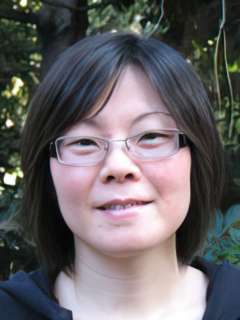
Jing Huang, PhD
Languages
Contact Information
Scientific Interests
Dr. Jing Huang and her colleagues are using functional genomics, chemical genetics, molecular biology, biochemistry and bioinformatics to study Tor (target of rapamycin)-dependent and other signal transduction networks as well as the molecular basis of human diseases and/or conditions involving this pathway (including cancer, aging, diabetes, obesity and various brain defects and dysfunctions). Model systems in the lab include the yeast Saccharomyces cerevisiae and mammalian cells. Insights from these studies are used to design and discover novel molecular therapeutics.
A second major area of interest in Huang's lab is the screening of small molecule libraries (including natural product banks, combinatorial chemical libraries and drug collections) to identify probes for human and other proteomes. Probes with high specificity and affinity allow the researchers to conditionally knock out or activate the function (reactions and/or interactions) of any protein in the body. As such, these probes offer an ideal tool for dissecting the complex networks of molecular and physiological events in vivo. Furthermore, some probes may become important drugs, either for treating diseases involving protein dysfunction (e.g., cancer and Parkinson's Disease), for improving quality of life that is dependent on protein activity (e.g., longevity drugs, anti-depression drugs) or for fighting infectious diseases. Currently, the researchers are investigating the molecular mechanisms of two natural products with unique anti-cancer and cell biological profiles.
Huang's research in stem cell gene regulation (including the regulation of neural stem cell fate) is related to her interest in protein interaction network mapping.
Highlighted Publications
Lomenick B, Olsen RW, Huang J. Identification of direct protein targets of small molecules. ACS Chem Biol. 2011 Jan 21;6(1):34-46. Epub 2010 Nov 30
Visnyei K, Onodera H, Damoiseaux R, Saigusa K, Petrosyan S, De Vries D, Ferrari D, Saxe J, Panosyan EH, Masterman-Smith M, Mottahedeh J, Bradley KA, Huang J, Sabatti C, Nakano I, Kornblum HI. A molecular screening approach to identify and characterize inhibitors of glioblastoma stem cells. Mol Cancer Ther. 2011 Oct;10(10):1818-28. Epub 2011 Aug 22
Aghajan M, Jonai N, Flick K, Fu F, Luo M, Cai X, Ouni I, Pierce N, Tang X, Lomenick B, Damoiseaux R, Hao R, Del Moral PM, Verma R, Li Y, Li C, Houk KN, Jung ME, Zheng N, Huang L, Deshaies RJ, Kaiser P, Huang J. Chemical genetics screen for enhancers of rapamycin identifies a specific inhibitor of an SCF family E3 ubiquitin ligase. Nat Biotechnol. 2010 Jul;28(7):738-42. Epub 2010 Jun 27
Lomenick B, Hao R, Jonai N, Chin RM, Aghajan M, Warburton S, Wang J, Wu RP, Gomez F, Loo JA, Wohlschlegel JA, Vondriska TM, Pelletier J, Herschman HR, Clardy J, Clarke CF, Huang J. Target identification using drug affinity responsive target stability (DARTS). Proc Natl Acad Sci U S A. 2009 Dec 22;106(51):21984-9. Epub 2009 Dec 7
Xie MW, Jin F, Hwang H, Hwang S, Anand V, Duncan MC, Huang J. Insights into TOR function and rapamycin response: chemical genomic profiling by using a high-density cell array method. Proc Natl Acad Sci U S A. 2005 May 17;102(20):7215-20. Epub 2005 May 9